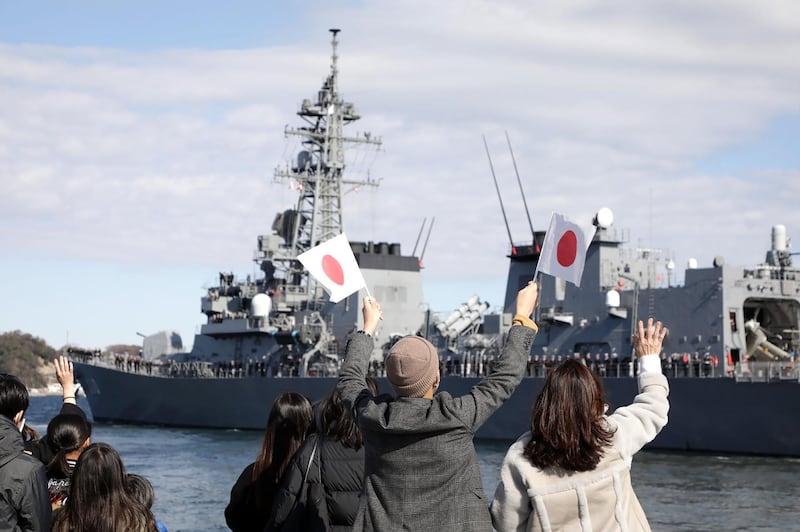A Japanese destroyer left for the Gulf of Oman on Sunday, amid simmering Middle East tension, to guard sea lanes that supply most of the oil that powers the world's third-biggest economy.
"Thousands of Japanese ships ply those waters every year, including vessels carrying nine tenths of our oil. It is Japan's lifeline," Japanese Prime Minister Shinzo Abe told the crew at Yokosuka naval base near Tokyo, at a ceremony attended by 500 family members and representatives from the United States, Europe and the Middle East.
Mr Abe's government said it is prepared to protect ships in danger, a controversial decision because Japan's war-renouncing constitution forbids the use of military force in international disputes.
However, the Takanami, which will be joined by two maritime patrol planes, will notjoin a naval force led by Japan's US ally or other naval coalitions in the region.
Tokyo has chosen to operate independently as it navigates disputes in the region and maintains cordial relations with Iran and other countries there.
Mr Abe travelled to the region in January to brief Saudi Arabia, the United Arab Emirates and Oman on the mission after earlier speaking with Iranian leaders.
Tension in the Middle East increased after President Donald Trump's decision to pull the US out of a 2015 international nuclear deal with Iran and reimpose sanctions on it.
The US has blamed Iran for several attacks on international merchant vessels, including a Japanese-owned tanker, the Kokuka Courageous. Tehran denies the accusation.
In addition to the Gulf of Oman, the Takanami, with 200 sailors and two helicopters, will patrol the northern Arabian Sea and the Gulf of Aden, but will not enter the Strait of Hormuz, a strategically important choke point between Iran and the Arabian peninsula.
The Japanese destroyer will share water in the region with a growing number of warships from other countries, including vessels from the US, France and Britain.
"Japanese merchant ships were attacked in June, and other nations have increased patrols so Japan too is acting to gather intelligence there," mission commander Captain Yosuke Inaba told reporters before he departed.






